Here is the Logic Pro Benchmark project file to use. Just download it, run it, and see how many tracks you can get to play without having the “System overload” window show up.
Make sure that you’re running 1024 Samples and that you’re choosing the max cores that your computer is supporting (see picture below).
To see the CPU performance, close all other apps you currently have running on your computer besides Logic Pro and open the Activity Monitor app.

Here are two more tests, the Alchemy Test and the Diva test. Both of these tests are intended to run on Logic Pro and it’s the same principle as the test above. If you can, duplicate as many tracks (with the midi-regions) as you can. The more tracks that can be played at the same time, the better.
You can also join our Discord channel where we discuss this and music production in general: https://discord.gg/48x7z6Zp99
| Mac Computer | # of Test Tracks |
| Mac Studio M3 Ultra 28-core 96GB RAM | 552 |
| Mac Studio M4 Max 16-core 64GB RAM | 393 |
| Mac Pro 2020 Xeon W 28-core | 386 |
| Mac Studio M2 Ultra 64GB RAM | 373 |
| MacBook Pro 16″ M3 Max 128 GB RAM | 370 |
| MacBook Pro 14″ M4 Pro 14C 20GPU 24GB RAM | 350 |
| MacBook Pro 16″ M4 Max 14C 32GPU 32 GB RAM | 344 |
| Mac Studio M1 Ultra 64GB RAM | 311 |
| MacBook Pro 14″ M4 Pro 10C 10GPU 24GB RAM | 286 |
| Mac Mini M4 Pro 14C 64GB RAM | 270 |
| Mac Pro 2019 16-core | 265 |
| MacBook Pro M2 Pro 16GB RAM 2023 | 203 |
| MacBook Pro M3 Pro 16GB RAM 2024 | 202 |
| Mac Studio M1 Pro 32GB RAM | 195 |
| MacBook Pro 14″ M2 Max 32GB RAM 2023 | 192 |
| MacBook Pro 16″ M1 Max 64GB RAM | 185 |
| MacBook Pro 14 M1 Pro 10-Core 16GB RAM | 181 |
| MacBook Pro 16″ 2021 M1 Pro 16GB RAM | 181 |
| MacBook Pro 14″ 2021 M1 Pro 16GB RAM | 178 |
| Mac Studio M1 MAX 64GB RAM | 174 |
| MacBook Pro 14″ M2 Pro 12-Core 32GB RAM | 162 |
| MacBook Pro M3 8GB RAM 2024 | 160 |
| MacBook Air M3 8GB RAM 2024 | 158 |
| MacBook Pro 14″ M4 2024, 16GB RAM | 144 |
| MacBook Pro 14″ 2021, M1 Pro 8-Core 32GB RAM | 143 |
| iMac 27 2020 i9 3,6Ghz 10-core | 136 |
| Mac Mini M4 16GB RAM | 133 |
| MacBook Air M3 16 GB RAM | 132 |
| iMac 27 2019 i9 8-Core | 125 |
| iMac 27 2020 i7 8-core | 123 |
| Mac Pro 2013 E5 2697 12-core | 119 |
| Mac Pro 5.1 12-core | 114 |
| MacBook Air M1 8-Core | 110 |
| Mac Mini 2020 M1 8-core | 109 |
| Mac Pro 4,1 2009 2×3.46Ghz 6-core Intel Xeon | 109 |
| iMac 27 2020 6-Core i5 3.3Ghz | 107 |
| MacBook Pro 2020 13 M1 16GB RAM | 106 |
| MacBook Pro 16 2019 i9 2.4Ghz | 105 |
| Mac Pro 2010 12-core 3.33Ghz | 104 |
| MacBook Pro 16 2019 i9 2.3 8Core | 99 |
| Mac Mini i7 8700B 6-core | 91 |
| MacBook Pro 15 i9-9980h 8-core | 90 |
| Mac Pro 2013 Xeon 8-Core | 88 |
| MacBook Air M2 8GB RAM 2023 | 85 |
| MacBook Air M2 2022 8GB RAM | 82 |
| Mac Pro 6.1 Xeon E5 6-core 3.5Ghz | 72 |
| MacBook Pro 15 2018 2,2Ghz i7 | 67 |
| iMac 27″ Late 2015 i7 4Ghz | 54 |
| iMac Late 2012 3,4Ghz i7 | 47 |
| iMac 27 2014 i7 4Ghz | 42 |
| MacBook Pro 15 Mid 2012 i7 2.3Ghz | 37 |
| iPad Pro M1 | 31 |
| MacBook Pro Mid 2014 i7 2.5Ghz 4-core | 30 |
| iPad Air M1 2022 | 29 |
| iMac 27 2017 i5 3,5Ghz | 27 |
| MacBook Pro 2017 2.3Ghz i5 | 21 |
| MacBook Pro, Early 2011, i7 4 core 2Ghz | 21 |
| MacBook Pro 13 2015 i5 2.7Ghz | 19 |
| MacBook Pro Mid 2014 2.6 i5 | 14 |
| MacBook Pro 13 i5 2016 | 14 |
| MacBook Pro 13 Mid-2012 i7 2.9Ghz | 5 |
| MacBook Air 13 i5 2018 | 3 |

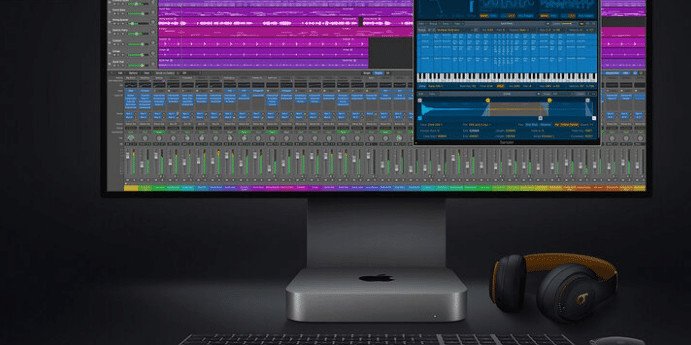

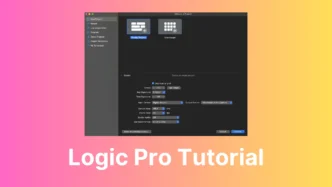
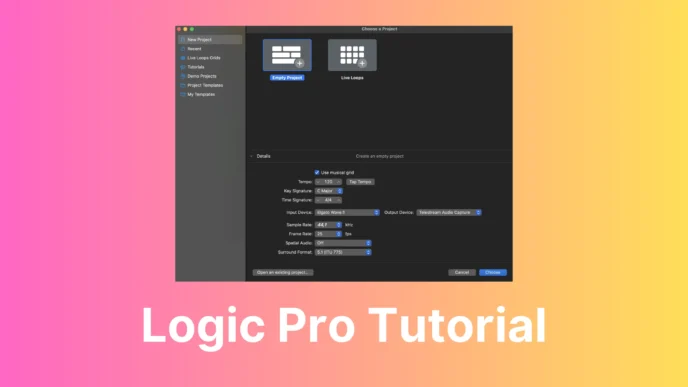
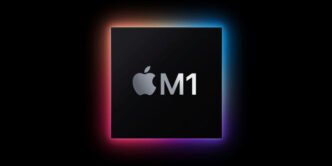

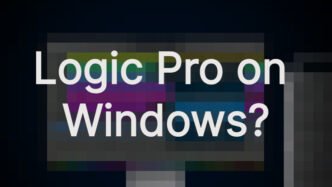
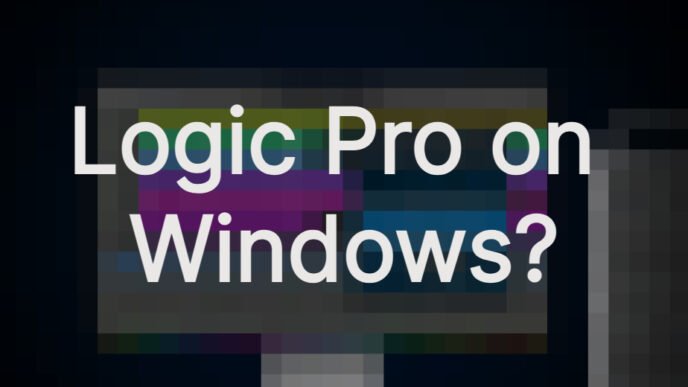

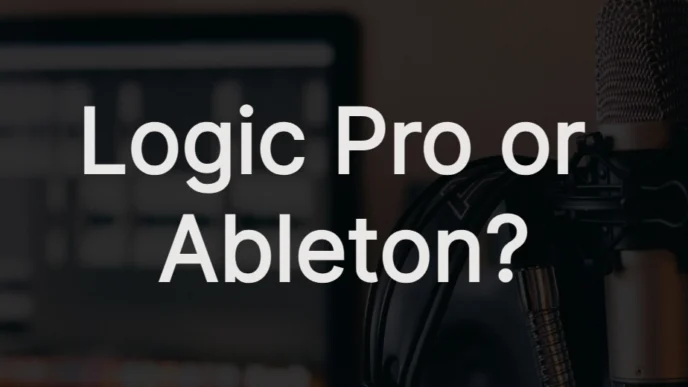
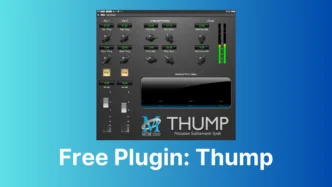
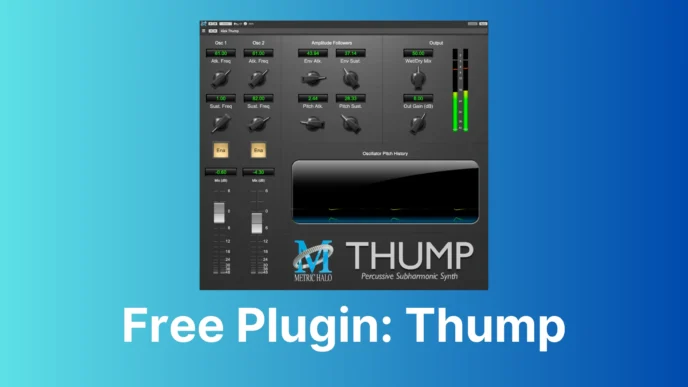
iMac 27 2014 i7 4Ghz – 42
Mac pro 2019 / 16-core / 265 tracks
MacBook Air 13″ Early 2015
1.6 GHz Dual-Core Intel Core i5
8GB RAM
= 14 tracks
Mac Pro 2019 / 16-core / 180 tracks.
I wonder what the difference is?
I’m running Logic 10.6.1 on Catalina 10.15.7
Buffer 1024, 32 threads, 64 bit precision, medium process buffer
I have 48GB RAM, but it’s nothing like full – about 25% utilised.
Interestingly, Logic Pro runs at 100% on its own meters but iStat menus says CPU is running at 84%.
My CPU won’t single-core turbo boost past 4.23GHz and for most of the benchmark test is running at ~3.9 GHz.
mmm … MacPro Mid 2010 /12-core 3,33Ghz/24Gb RAM – 204 tracks before overload
iMac 27 2020 i7 8-core – 123 tracks
Hackintosh with same i7-10700K processor – 140 tracks
Mac Pro 2013 E5 2697 12-Core – 119 tracks
Mac Pro 2020 Xeon W 28-Core – 386 tracks
I got a very different result.
Mac Pro 2019 Xeon W 28-core 2.5Ghz, 384GB 2933MHz DDR4, Radeon Pro Vega II 32GB, 8TB internal SSD, Catalina 10.15.7, Logic 10.6.0, Output Device: Mac Pro Speakers, Input Device: None, I/O Buffer Size: 1024 samples, Process Buffer Range: Medium, Processing Threads: Automatic (56), Multithreading: Playback & Live Tracks, Summing: High Precision (64-bit)
Total tracks before overload: 275
15 inch MacBook Pro 2019 i9-9980h 8-Core – 90 tracks
MacBook Pro, Early 2011, 2 GHz i7 (4 Core) – 21 Tracks
iMac 27″ Late 2015, I7 4GHz, 4 Core, 32 GB RAM, Apollo Twin Mk. II Thunderbolt – 9.12.2 drivers, 1 TB SSD, 54 tracks
Mac pro 4,1 2009 -> 109 tracks
2 x 3.46 GHz 6-Core Intel Xeon, 48 GB 1333 MHz DDR3
Mac Pro 2013 Xeon 8-Core. 128GB RAM – 88 tracks
Mac Pro 2010 – 12 Core 3.33Ghz
104 tracks at 44.1khz
92 tracks at 48khz
Buffer size made no difference.?!
Bought on eBay for £1350 = £13 per track
28 Core costs £12.5k minimum- so for 386 tracks that costs £32 per track, though I’m sure there are other benefits.
Interesting calculation. But my friend Daniel’s Mac Pro 2020 was not purchased for music production actually. It is mainly used for video production and rendering.
But I was curious and so I persuaded him to make this test.
Yes that makes sense. It would be overkill for all but the most demanding music situations!
Unfortunately this is a synthetic test, which won’t show any other bottlenecks that will happen in real life scenarios. I have the 4.1 12-core that scored 109 in this test, that in my latest project which utilises many kontakt instruments, reading samples off the disk etc, it actually performs worst than my mac pro 6.1 6-core that only scored 72. Newer macs come with better ram bandwidth, better disk bandwidth, better interfacing and more. Just my thoughts!
I agree
My maxed out 5.1 can open 114 tracks but sucks when i use 6 instances of diva and a few other plugins thats why i think im going to buy a imac 2020 8 or 10 core.
94 tracks at 44.1khz
AMD 3600x 6cores 4.4ghz
(hackintosh)
iMac late 2012, 32 gb ram, 3,4 GHz i7 – 47 tracks
Macbook Pro 2017 2.3ghz Dual core intel i5
21 tracks
MacBook Pro (Retina, 15-inch, Mid 2014)
Intel Core i7-4870HQ @ 2.5Ghz (4-cores, 8-threads)
16 GB 1600 MHz DDR3
= 30 tracks with Turbo Boost OFF
= 24 tracks with Turbo Boost ON
Waiting for the new Apple Silicon Macs in order to check their native software performance. Then I might upgrade if they perform better than an Intel 2020.
99 tracks MacBook Pro 2019 16″ 2.3 8 core, 64GB RAM, 2TB SSD
Mac pro 6.1 trashcan -> 72 tracks
3.5 GHz 6-Core Intel Xeon E5, 64 GB 1866 MHz DDR3
iMac 27 i7 3,8 Ghz 8-Core / 32 GB 3200 Mhz DDR4
160 Tracks – 44,1 KHz – io Buffer Size 64
60 Tracks – 96 KHz – io Buffer Size 64
iMac 27 inch 2020, 3,3 GHz 6-Core Intel Core i5, 16 GB 2667 MHz DDR4 – 107 tracks on advised settings.
Wow! My 2019 iMac 5K gets 65 tracks… But I guess your CPU has Hyper Threading?
MacBook Pro, 13″, Mid 2012, 2.9 i7, 16 GB, 512 SSD, not even 6 (frikin) tracks )))
MacBook Pro, 15″, Mid 2012, 2.3 i7 12GB, 500SSD, 37 tracks
MacBook Pro mid 2014 – dual core 2.6 i5, 8GB 1600 DDR3
14 tracks
Mac Mini 6 Core I7 8700B 16GB Ram – 91 Tracks
MacBook Pro 13inch 2015 retina 2.7Ghz I5 8Gb Ram 19 tracks
Would love to see how the new Apple M1 Chip is performing with the Mac Mini or the Macbook Pro
There is a test coming very soon – all M1 processors on Logic Pro X, Ableton Live and FL Studio.
Not as good as for video editing.
Find here my testing of the baseline Mac mini:
https://imgur.com/pqacSPL
Thanks Ricky for this information. I can see that your CPU is not maxed out in the test. Could you put the max amount of samples (1024) and adjust the amount of cores to the maximum value in the settings window you have up and re-do the test?
The previous one was more like a producing situation.
In the mixing phase you can get that kind of performance:
https://imgur.com/W8Ksah5
I assume you refer to the I/O Buffer Size. I agree that if you have it on the highest value, it’s not really ideal to produce music with. This test makes sure that all of the systems that do this test shows it’s maximum capacity. That is why it’s important to have it set to extreme settings.
In case you didn’t get my reply (I don’t see it after refreshing the page):
https://imgur.com/W8Ksah5
Got it Ricky, thank you for the information!
Hy Ricky, thank you for your valuable entry!
Does it manage well multiple instances of virtual instruments?
For Logic instruments its on par with my 16′ MacBook Book Pro.
What kind of VI do you use ?
Because by now, Kontakt cannot be installed and u-he still work better on my MBP (10 heavy instances of Diva vs 3-4 on the Mac mini)
Regarding VI I’m using Trilian, Serum, Chromaphone, Twin 2, Iris V.2, VocalSynth 2, bx_oberhausen, -U-NO-LX, XILS 3 et Largo. I don’t have Diva but it’s well known for being CPU intensive. So the Mac Mini M1 can’t manage more than 4 Diva? Mmm, How many Alchemy instances can it manage then?
My reference point is this video:
https://www.youtube.com/watch?v=EF1zEUDOePU
From your results, it looks like the Mac Mini M1 is far below the Mac Mini 3.2 i7 no(?)
Regarding your plugins, I can only tell you that U-NO-LX works.
I performed the Logic Benchmark project replacing Sculpture with Alchemy’s basic patch, a 128 E/S Buffer (to get closer to a producing situation) and it was able to run 22 channels vs 25 on my MBP.
I wait for NI stuff to be compatible (even under Rosetta) to be able to estimate real world performances.
One thing is for sure, its dead silent even under heavy workloads.
Thank you Ricky,
In fact, my mac pro 2009 (2×2,26 nehelem) died. My choices are the mac mini M1 (with 16Gb RAM and 1Tb SSD) or a Mac Pro 2013 (I can have one for 1000 euros). I don’t really mind waiting for 3rd party plugins, my main and most important tool is Logic. To be honest, even if the 2013 mac pro is compatible with Big Sur, I’m a bit scared because what if Apple claim next OS needs T2 chip in a year or so? Then T1 equipped macs won’t be able to get the last version of the OS and Logic as well :/ (just to be clear, I don’t need the last OS, I just need to be able to update Logic, but as you know Apple is linking its things).
Being future proof is indeed also important to me.
Usually Apple support its products 5 to 7 years after they stopped to make it. As mac pro 2013 has been sold until late 2018, it should be supported at least until 2023, but sometimes Apple is full of surprise 🙁 If the Mac Pro can hold until 2023 that would give me enough time to see what will come and why not a sort of mac mini pro or let’s say a more advanced one, with more TB/USB port and a M2 chip, why not (?).
If anyone could give their thoughts to help me it would be very much appreciated 🙂
To be honest, I think that these new Macs are just the base of what Apple will offer with this generation and the 2013 Mac Pro GPU isn’t enough reliable.
Is your Mac Pro really impossible to prepare ? Because regrading the price, neither the Mac mini nor the Mac Pro are obvious choices.
First, the Mac Pro is expensive and on the other end, Apple is going to deliver more powerful iMac/MacBooks/MacMini? by Q2 2021.
My advice would be to get your Mac Pro back to work for 3-6 more months before going to Apple Silicon.
My Mac Pro 5.1 12 core 64 gb ram 2tb nvme ssd Radeon 580xt opens 114 Tracks.
I think in real life newer Macs can handle more heavy cpu stress even when they open less tracks here in this test.
Sorry if this is a basic question but I’m really baffled.
How come when the “system overload” message appears Logic suggests “increase the buffer size“ yet this makes the problem worse. Ie at 1024 the system overloads quicker and you have to lower the amount of selected tracks in order to complete a smooth play through.
Lowering The buffer to 128 allows for a lot more tracks to be played.
My results:
128: 45 tracks, 256: 40 tracks, 512: 35 tracks, 1028: 30 tracks and this goes up quite a bit if the buffer range is changed to large
Can anyone shed light?
Thanks is so much!
Yeah..I found the same behaviour..doesn’t quite make sense..
43 tracks (but could have been more (about 50 tracks I guess) because I had word, chrome with many tabs, adobe reader and an external monitor running) on Macbook Pro Mid 2020 i5 Quad Core 1,4 Ghz 8GB Ram Catalina.
Interesting point I wasn’t aware of!
what you mean by not reliable? they tend to physically fail or you mean not powerful enough? both?
Regarding upcoming products I totally agree with you but, there is a but, in the past I owned a MacBook (I still have it actually, just using it as audio analyzer with flux:: (this is where the 2nd RJ45 port of the Mac Pro is very welcome)) and an iMac, but it don’t really fit my setup. Regarding the Mac Pro 2009, no, the CPU tray died. 890 euros for a tray with cpu’s. So it is the end of the road 🙂
Regarding the M1 until now, I couldn’t find something: on the intel version, the two USB ports are connected to the same controller, is it the same on the M1? If it’s the case, I can only connect the RME UFX on it. the second port is lost. so basically I don’t really know if it can handle my setup nicely thru various HUBs. Here’s my actual setup:
RME UFX (USB 2), 5 x midi controller/keyboards/pads…, 8×8 midi i/o (usb 3) to connect my hardware synths, Roland TR-8 (USB 2), Access VirusTi Snow (USB 2), iLok (USB), e-licenser (USB), Apple Trackpad (BT), Expert Mouse Wired Trackball (USB), HDD/SSD storage bay (USB 3). Aside I have a small fanless PC to handle two RME Multiface II linked to the UFX thru adat + WordClock. The MacBook (connected to a 34inch monitor) is just for the Fluxx:: Analyzers and some business stuff.
If I have to cut off things, well I could, probably a bit convenient but certainly not a drama:
I can manually sync the TR-8 (As I did in the beginning when their driver was a total mess…then no need to connect it to USB port), I can drive the VirusTi with a 3rd party soft using din midi i/o instead of USB. By 5 controllers, I can connect 3 of them on the midi i/o to release some USB ports. Rest is needed. It is a cut down (can we say that in English?) but feasible.
Still a hard choice as the mac pro 2013 seller is waiting for my answer tomorrow or the next day !
I feel like a dog under the rain 😀
PS: please forgive my non-native English :p
2012 Mac Pro 64 Gigs Ram, NVME drive Apogee Symphony 45 tracks at 1024 buffers using USB …I only get 40 tracks if I use the 64 pcie card…
MacBook Pro 15 Late 2011, i7 2,4ghz and 16gb of ram.
27 tracks on the benchmark.
I was feeling it restrictive. I would definitely go for a Mac mini M1 as a desktop machine.
I will just wait to understand if 8 or 16gb of ram are a big difference.
And ofc I will hold my old MacBook as a portable lightweight machine
Base Macbook Air M1: 110 quite impressive for a fanless machine
Thank you for this! Added to the list!
How did you get 110? I have a 16 GB RAM MacBook Air M1 and I’m getting system overload at 90 tracks.
My Air M1 – 83 tracks.
MacBook Pro, 13″, Early 215, 3.1GHz i7, 16 GB, 512 SSD, 15 tracks, is this normal? I thought my mac was still powerful…
why did you think your mac was still powerful? it only has 2 cores! it never was a very powerful machine. not when you bought it either
I just upgraded to a 2018 Mac Mini i7 from a 2014 13″ MBP i7-16GB RAM. Yeah the poor 13″ MBPs with the dual core i7s can’t handle too much. The best you can do is freeze tracks so it doesn’t take up resources. I got tired of doing that so I got a good deal on the Mac Mini. Makes a big difference with the 6 core i7! I wasn’t ready to make the leap to the M1s as I want to give it another couple of years for the Apple silicon to mature.
Mac Pro Late 2013 3.7Ghz 4-Core Intel Xeon E5: 44 Tracks
AlchemyTest: 80 Tracks
MacBook Air Intel 2020 1.1Ghz 4-Core: 31 Tracks
AlchemyTest: 55 Tracks
I should have bought Macbook Air 4 months later… 😀
Mac Mini (2012) i7 2.3Ghz 16Gb Ram, High Sierra – 38 tracks
MacBook Pro (Retina, 15-inch, Mid 2014), 2.8 GHz Quad-Core Intel Core i7
New Logic Benchmark— 22 tracks
MacBook Pro 2020 M1 13″ 16GB – 106 tracks
Late 2016 MacBook Pro 2.9Ghz Quad-Core i7 / 16GB / 2TB OS 10.14.6.
New Logic Benchmark.
42 tracks.
Huh? I am able to run *more* channels at 32 samples than 1024… how about that. 12-core Mac Pro 5,1 – 106 vs 102
Same here. Weird?! Can anyone explain that?
2018 Mac mini, 3.2 i7 6 core 32gb ram, logic 10.5.1
74 tracks
I think i am not getting as high as the other minis here as i am using 58 inch screen but not bad and more than enough for my projects, but i will be getting the new M1 mini.
Anyone need a mac mini????
Which audio Interface do you guys use with the new Mac Mini M1 ?
I’m using the Focusrite Scarlett.
Good question indeed. Anyone with M1 and RME interface?
Hackintosh i9 14 core, 32gb = 362 tracks
Interested to know more about your machine …. did you follow a guide to build it?
Yeah also interested to know more..
I have a 18 core 9980Xe Hackintosh and that only reaches 211 tracks 🙂
Andy
i9 10900F 10 core Hack, 32GB ram, Logic Pro 10.6 = 188 tracks
Hackintosh – 10600k 6 core/12 thread – 32GB RAM – 1TB NVMe SSD = 201 Alchemy Test
So M1 Macbook Air is good to run Logic Pro X, right? or better get the M1 Pro?
2018 Mac Mini, 8GB RAM 3.6 GHz Quad-Core Intel Core i3 = 34 Tracks
MBP 13″ early 2011 2.7 i7, 16GB RAM, 11 Tracks. Nearly 10 years old – not bad! I’d been putting off upgrading to another intel model as I mostly track audio on this and edit on the trashcan, so the performance boost for another intel portable was not justified, perhaps now I could just use the M1 Air for both.
Hi Everybody. My kinda old IMac (21,5 Late 2013 2,7 i5 16 gb ram 1tb ssd) plays 19 Tracks.
I will definitely go for the Base MB Air as soon as I can.
AMD Hackintosh with 3900x uses roughly 45% CPU when playing 128 tracks.
211 tracks maximum (AMD 3900x Hackintosh)
287 tracks on AMD Ryzen 3950X (16C/32T), 64GB 3600MHz DDR4, Samsung SSD 870 QVO 1TB